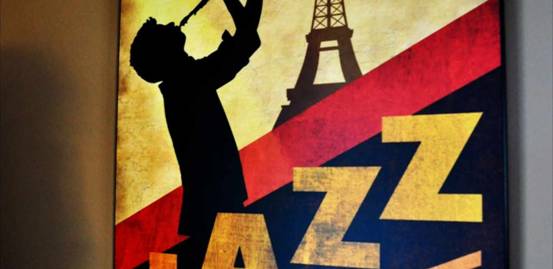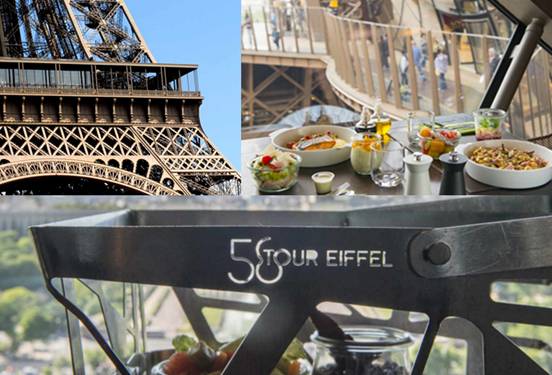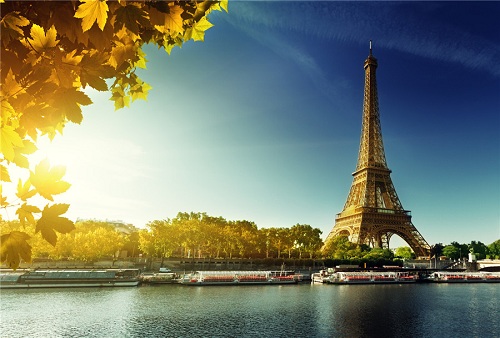A Comprehensive Travel Guide: Nice, Cannes, Grasse, Saint-Paul-de-Vence
This guide details a classic loop through the heart of the French Riviera, exploring the vibrant city of Nice, the glamorous town of Cannes, the world's perfume capital in Grasse, and the enchanting hilltop village of Saint-Paul-de-Vence. This itinerary offers a perfect blend of coastal beauty, cultural richness, and Provençal charm.
Trip Overview & Logistics
This journey is best experienced over 4 to 7 days, allowing for a relaxed pace to soak in the distinct atmosphere of each location. The recommended route is a circular one, starting and ending in Nice, which has the largest international airport and excellent transport connections.
Recommended Duration: 4-7 days
Start/End Point: Nice Côte d'Azur Airport (NCE)
Best Time to Visit: May-June and September-October for pleasant weather and fewer crowds. July-August is peak season with high temperatures and crowds.
Primary Transport:
Train: Excellent and scenic TER regional train service connects Nice, Cannes, and Grasse.
Bus: Buses are essential for reaching hilltop villages like Saint-Paul-de-Vence (e.g., Ligne d'Azur bus #400 from Nice).
Car Rental: Offers maximum flexibility for exploring the hinterland but can be a challenge for parking in city centers and villages.
Sample Itinerary:
- Day 3: Day trip to Cannes.
- Day 4: Day trip to Grasse.
- Day 5: Day trip to Saint-Paul-de-Vence.
- Day 6: Return to Nice for departure or further exploration.
Nice: The Queen of the Riviera
Nice is the vibrant, bustling capital of the French Riviera, known for its stunning seafront promenade, Italianate old town, and exceptional light that attracted countless artists.
Key Attractions
Promenade des Anglais: The iconic 7-kilometer seafront walkway, perfect for a stroll, cycle, or simply gazing at the turquoise waters of the Baie des Anges.
Vieille Ville (Old Town): A labyrinth of narrow, winding streets filled with bustling markets, charming shops, and traditional restaurants. Don't miss the daily Cours Saleya Market, selling flowers, produce, and local crafts.
Colline du Château (Castle Hill): While the castle is long gone, this park offers the best panoramic views of Nice, the old town, and the coastline. A free elevator provides easy access to the top.
Musée Matisse: Housed in a beautiful 17th-century Genoese villa, this museum holds one of the world's largest collections of Henri Matisse's works.
Marc Chagall National Museum: Dedicated to the artist's biblical message cycle; a stunning collection of his large-scale paintings.
Practical Information for Nice
Getting There: Nice Côte d'Azur Airport (NCE) is the main gateway, with tram and bus connections to the city center.
Getting Around: The city center is very walkable. An efficient tram system connects key areas, and buses serve the wider metropolitan area.
Food Specialties: Socca (chickpea flour pancake), Pissaladière (onion tart), Salade Niçoise, and Pan Bagnat.
Accommodation Tip: Stay in the Old Town for charm or near Jean Médecin Avenue for modern convenience and transport links.
Cannes: Glamour and Cinema
Synonymous with the international film festival, Cannes exudes luxury, sophistication, and a polished elegance. Its famous boulevard is lined with designer boutiques, grand hotels, and pristine beaches.
Key Attractions
La Croisette: The legendary seafront promenade, home to the Palais des Festivals, luxury hotels like the Carlton, and private beaches.
Palais des Festivals et des Congrès: The venue for the Cannes Film Festival. Visitors can walk the red-carpeted steps and see handprints of stars in the Allée des Étoiles du Cinéma.
Le Suquet: The old town of Cannes, a charming medieval quarter perched on a hill. Climb to the top for stunning views over the bay and explore its narrow streets and restaurants.
Îles de Lérins: A short boat ride from the harbor, these islands offer a peaceful escape. Visit the fortified monastery on Île Saint-Honorat or the mysterious "Man in the Iron Mask" prison on Île Sainte-Marguerite.
Marché Forville: A covered market offering fresh local produce, cheeses, meats, and flowers—a true slice of local life.
Practical Information for Cannes
Getting There from Nice: The TER train from Nice Ville station takes approximately 25-40 minutes and runs frequently along the coast.
Getting Around: The city center is easily explored on foot. A local bus network serves other areas.
Food Specialties: Seafood is king. Enjoy bouillabaisse (fish stew) or dishes made with local catch.
Beach Note: Most beaches along La Croisette are private and require a fee for a sunbed. Public beaches can be found at either end of the bay.
Grasse: The World Capital of Perfume
Located inland in the hills above Cannes, Grasse has been the center of the perfume industry since the 16th century. The air itself is fragrant with the scent of jasmine, rose, and other flowers used in its world-renowned perfumeries.
Key Attractions
Perfumeries (Parfumeries): Take a guided tour of a major perfumery such as Fragonard, Galimard, or Molinard to learn about the history and process of perfume making. Workshops where you can create your own signature scent are a popular activity.
International Perfume Museum (Musée International de la Parfumerie): Explores 4,000 years of perfume history, from ancient rituals to modern manufacturing.
Cathédrale Notre-Dame-du-Puy de Grasse: A 12th-century cathedral housing several works of art, including paintings by Peter Paul Rubens and Jean-Honoré Fragonard.
Jardin des Parfums (at the Fragonard Perfumery): A beautiful garden showcasing many of the fragrant plants used in perfumery.
Practical Information for Grasse
Getting There from Cannes/Nice: The TER train from Cannes (approx. 30-40 mins) or Nice (approx. 1 hour) climbs into the hills offering lovely views. Buses also connect from both cities.
Getting Around:The historic center is hilly but walkable. The train station is at the bottom of the town, so be prepared for an uphill walk or take a local bus to the center.
Shopping Tip: This is the best place to buy perfume directly from the source, often at better prices than in coastal cities.
Saint-Paul-de-Vence: The Enchanted Hilltop Village
A perfectly preserved medieval village perched on a hilltop, Saint-Paul-de-Vence is one of France's most famous *villages perchés* (perched villages). It has long been a haven for artists and intellectuals, with its cobblestone streets, art galleries, and breathtaking views over the surrounding countryside.
Key Attractions
The Ramparts & Village Gates: Walk the complete circuit of the fortified walls for incredible views. Enter through the grand Porte de Vence.
The Cobblestone Streets:The main pleasure is simply getting lost in the labyrinth of narrow lanes, discovering hidden courtyards, fountains, and artisan shops.
Fondation Maeght:A world-class modern and contemporary art museum located just outside the village walls. Its collection includes works by Miró, Calder, Braque, and Giacometti, set within a stunning architectural space and sculpture garden.
La Colombe d'Or:A legendary inn and restaurant famous for its collection of modern art, which was given in exchange for meals by struggling artists like Picasso, Matisse, and Chagall before they were famous. Reservations are essential.
The Pétanque Square (Boule Court):A historic spot where locals and visitors play *pétanque* (French bowling), famously depicted in photos of artists like Yves Montand and Marc Chagall.
Practical Information for Saint-Paul-de-Vence
Getting There from Nice:The most direct way is by bus. Ligne d'Azur bus #400 departs from Nice (near Place Masséna) and takes about 45-60 minutes, winding through several towns and offering scenic views.
Getting Around:The village is entirely pedestrianized. Parking is available at the base of the village but can fill up quickly in peak season.
Visitor Tip:Arrive early in the morning or later in the afternoon to avoid the peak day-trip crowds. The village is much quieter and more magical at these times.
General Travel Tips for the French Riviera
Cuisine of the Region
The food is a blend of Provençal and Mediterranean influences. Key dishes include:
Socca:A thin, savory chickpea pancake.
Salade Niçoise:A classic salad with tuna, eggs, olives, anchovies, and fresh vegetables.
Ratatouille:A slow-cooked vegetable stew with eggplant, zucchini, peppers, and tomatoes.
Pissaladière:A type of pizza topped with caramelized onions, olives, and anchovies.
Bouillabaisse:A luxurious fish stew from Marseille, also found in Cannes.
Rosé Wine:The local wine of choice, perfectly suited to the climate.
Transportation Summary
Tram & Bus in Nice:The Ligne d'Azur network is efficient. A 10-ride pass ("10 Voyages") is cost-effective for multiple trips within Nice.
TER Trains:The coastal train line is one of Europe's most scenic. Consider a regional pass if making multiple trips in one day.
Tickets:Tickets for buses and trams must often be purchased in advance from machines at stops or stations, not from the driver.
Shopping & Souvenirs
Nice/Cannes:Local markets (Cours Saleya in Nice, Marché Forville in Cannes) for Provençal fabrics (les tissus), soaps, and olive oil.
Grasse:The best place to buy perfume, scented soaps, and candles directly from historic factories like Fragonard.
Saint-Paul-de-Vence:A hub for art galleries and high-quality crafts. Look for ceramics and olive wood products.
A Note on Language & Etiquette
A simple "Bonjour" (hello) when entering a shop or cafe and "Merci" (thank you) go a long way. While English is widely spoken in tourist areas, attempting a few basic French phrases is always appreciated. Service charges are included in restaurant bills ("service compris"), but it is customary to leave small change or a small extra tip for good service.
Sustainable Travel Tips
Use public transport where possible; it's efficient and reduces traffic congestion.
Carry a reusable water bottle; tap water is safe to drink in France.
Support local artisans and producers by shopping at markets and small boutiques.
Respect village tranquility by keeping noise levels down, especially in historic centers like Saint-Paul-de-Vence.


